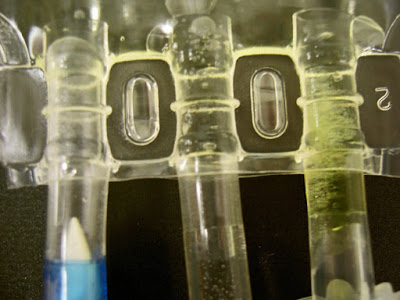Injection compatibility: Introduction
NB: See learning outcomes for this tutorial mapped to competencies, a PDF of the whole text, and a one-page summary.
☞ Why this subject matters...
Injections and infusions are common in hospitals, and in high care areas particularly. However, some patients have restricted intravenous access and in these situations pharmacists need to be able to advise nursing and medical staff about safe ways to continue to give all the medicines required. Mixing injections may be part of the solution, but if approached incorrectly this might cause patient harm, so pharmacists must know how to do it safely. It is a common subject to be asked about when on-call.Definition
An incompatibility occurs after mixing parenteral drugs if at least one of them becomes less effective (or more toxic, although this is rare). Changes that can occur include:Physical incompatibility (e.g. precipitation, haziness, crystallisation or emulsions ‘cracking’). This is a visible change largely determined by the pH and formulation of the injections concerned.
Chemical incompatibility (e.g. degradation, inactivation, or a new compound formed). This is a chemical reaction between the drugs after mixing.
Note that many published studies of compatibility only examine physical incompatibility – i.e. there is a visual inspection of the mixture only, without chemical analysis. Chemical incompatibility must be determined by assay of the mixture (e.g. by HPLC). Physical incompatibility, particularly precipitation, is also the only incompatibility that might be easily detected at ward level. So, just because a mixture ‘looks okay’ does not necessarily mean that the drugs are compatible!
 |
| Precipitation - an example of physical incompatibility |
 |
| This neonatal TPN was formulated incorrectly and calcium has crystallised out in the far right port Courtesy of Peter Rhodes |
Implications for patients
Physical or chemical incompatibility may make one or both drugs unavailable to the patient because they are no longer in solution or are destroyed. This means that a patient may not receive all or part of a dose, despite it being prescribed and administered. The small particles generated as a result of physical incompatibility can cause other problems: they may block intravenous administration lines, and might cause vasculitis, small emboli or even death.







